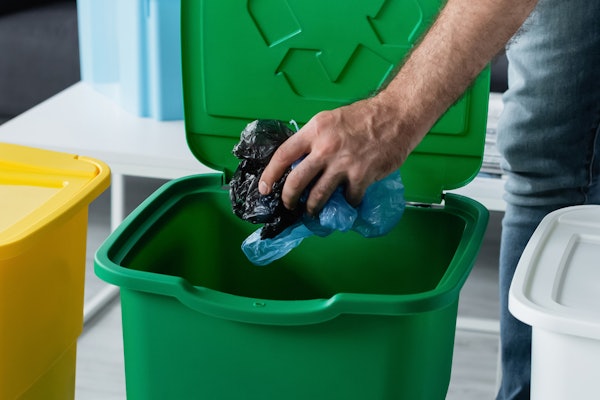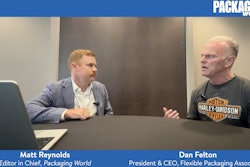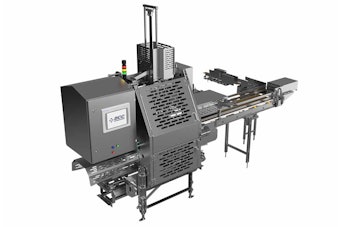Few topics raise the hackles of political emotions as much as talk of “global warming” or “green.” Some people are passionate about conservation. Others are suspicious of an anti-business, liberal conspiracy. Putting aside politics, what companies are discovering is that they can be sensitive to the environment, earn credibility with the public for being good citizens, and improve the bottom line—all at the same time.
People who have been implementing energy savings projects have discovered that no stone should be left unturned while looking for likely candidates for projects. Machine and process operations are often a good place to start. Heating, ventilation, and air conditioning (HVAC) systems can be a gold mine of cost savings, too.
One thing that puzzles many observers, though, is that with all the technologies developed during the past 15 years and the resulting publicity, why has adoption of energy-saving technologies been so slow? John Malinowski, motors product manager at electric motor manufacturer Baldor Electric Co., says that a big part of the problem is the way people are rewarded for job performance. For example, he says, of the total cost of an electric motor over its life, only about 3% is the original purchase cost. Upwards of 97% of the cost is the amount of electricity it will draw. The purchasing agent is not graded on this major part of the cost, however, but rather on just the original purchase price. It would take an executive-level decision to change the system and make energy cost reduction a part of everyone’s job description.
Joel Shapiro, group manager for measurement and control at vendor National Instruments (NI), says, “One thing that comes up in meetings with customers is that once people understand what they have, it helps them understand where to start. I just read a quote in The Economist regarding energy and greenhouse gas emissions that went something like, ‘If you start to measure, people start to reduce.’ We enable the measurement.”
Sometimes, the documentation and data acquisition required go beyond production data. Taking the idea to the next level is a South African company involved in mining, energy, chemicals, and synthetic fuels. Sasol, originally the South African Coal, Oil & Gas Corp., in Sasolburg, South Africa, worked with consultants from Invensys Process Systems, a supplier of process control and performance management products, to devise measurements and how to use the information in order to not only improve the energy usage of its boilers and reduce overall electric consumption, but also to prove to accounting that the savings were real.
Doing it better
Russ Barr, director of the Performance Measurement Group, a consulting arm of Invensys Process Systems, says, “Sasol embraced the whole idea of, ‘We can do it better.’ They are striving to achieve operational excellence from the operations side, integrating performance measurements from a business perspective with financial measures. Problem was, financial measurements were released on a monthly basis—far too late to be useful for real-time operations decisions. So we helped them develop algorithms to start to bring together the disciplines. When we made improvements, both operations and finance could agree from the information in their dashboards that the improvements were valid. It is absolutely essential that everyone’s dashboard, including operators, includes financial measures.”
Sasol achieved a 6% savings on energy feedstocks and a 4% savings on electricity costs the first month after implementation. Subsequent monthly results showed progressively better savings. More consistent operation from a business perspective led to approximately a $230,000 savings in just the first month.
Many commercial boilers that provide heat to schools, plants, commercial buildings and other large facilities consume a lot of energy. Says Steve Connor, director of marketing for Cleaver Brooks, a Milwaukee-based manufacturer of such boilers, “Boiler fuel consumes an ever increasing share of the cost of operation. Now, with oil procurement issues, rising costs, and customer concerns about the effluent from the exhaust stack, we used the obsolescence of our burner control system to search for a way to upgrade to the 21st Century to achieve the goals of improved efficiency and reduced emissions. We didn’t have sufficient in-house controls expertise, so we had to find a partner. After a search, Rockwell Automation came out as someone who could help us.”
Cleaver Brooks engineers felt that using a programmable automation controller, such as the Allen-Bradley CompactLogix from Rockwell Automation Inc., would give its customers more flexibility than a custom microcontroller. Rockwell engineers helped Cleaver Brooks develop the control system. “That’s how the Hawk ICS was born,” reports Connor, in reference to the new boiler control. And the controller platform is used not only for burner management, but also for positioning, fuel/air actuators for optimum combustion efficiency, and automated damper control, so that when the boiler is off line, ambient air is not pulled into the system. Allen-Bradley variable frequency drives are networked to the system to control the combustion fan so that the motor is not using full horsepower against a closed damper.
“It’s great to be green, but there must be a financial return for the customer,” concludes Connor. “Customers are aware of the problems in the Middle East with oil supply, and they are concerned with pollution and their carbon footprint. But higher efficiency is still the primary selling point.”
Saving 20%
How would you like to shave 20% from your energy cost per product manufactured and increase productivity at the same time? SEW-Eurodrive is a manufacturer of variable frequency drives and gear motors. This German company has its headquarters and principal U.S. manufacturing facility in Lyman, S.C. Managers at the plant are always looking for ways to reduce the costs of energy, materials, and waste. Plant manager Carl Hinze and assistant plant manager and head of maintenance Chuck Chandler have assembled an impressive list of accomplishments in their program. Along the way, they have reduced the energy cost per part manufactured by 20% over three years.
Sometimes, justifying the upfront investment in these projects is hard to get buy-off from the finance department. “We’re a privately held company, so we don’t have to justify expenditures to the board. If it makes sense, we do it,” Hinze says. “We’ll study a problem and proposed solutions. Then we’ll try out a pilot project just to make sure it isn’t just ‘salesman talk.’ We just tried out new lamps in our lighting fixtures in the plant. If it works in the entire plant like it did in the pilot, we stand to save almost $33,000 a year.”
The plant recycles all possible manufacturing waste. This not only reduces landfill costs, but sometimes adds a little income. Items recycled in one way or another include wood pallets, cardboard, computer equipment, and metal chips from the machining processes. Hinze and Chandler also turned a critical eye to manufacturing processes. In one operation, by changing from grinding to hard turning, they cut the cycle time in half, reducing electricity consumption and increasing productivity. Going from electric heat to natural gas reduced cost on the carburization process. When the price of natural gas went up, they purchased regeneration U-tubes to cycle waste heat back into the system to reduce consumption. Automating the cooling system with variable frequency drives allowed them to shut off pumps when there was no demand.
Chandler concludes, “We’re constantly looking for ways to reduce energy costs. Our owner is concerned with environmental protection and recycling, so it’s just a company mindset. Sometimes it’s hard to do a project, but we do it when it makes sense.”
Lessons from the university
The University of Cincinnati was faced with upgrading its aging facilities management equipment that provides heat and cooling for 100 buildings across 420 acres. The university uses three central utility plants that deliver 635,000 pounds of steam per hour for heating, and 22,000 tons of chilled water for cooling. The facilities management department wanted to convert from its proprietary distributed control system to an open control system. The department also wanted to create a network of controllers that would make heating and cooling more automated and more efficient.
The department chose Wonderware to run the new control system. “We chose Wonderware software because we thought it would be easy to install and let us mix our existing equipment with new equipment,” says Everett Wolverton, associate director of facilities management at the university. “It also suited our long-range plan to integrate the campus for better energy accounting systems, which would let us better match production capabilities with what’s actually used on the campus, and increase our overall efficiency ratings.”
By adding new equipment and installing an automated control system that monitored energy use and reduced waste, the university was able to trim its energy consumption by 15%. The savings amounts to $1.8 million per year, delivering a quick payback on the control system upgrade.
With rising energy costs and the growing interest in reducing carbon emissions, plants are becoming more interested in making their facilities more energy efficient. And plants such as those at the University of Cincinnati are discovering they can use automation technology to drive down energy consumption.
Tracking and monitoring
One of the critical requirements to reduce energy costs is the ability to track and monitor energy consumption. You can’t reduce what you can’t measure. “Ninety percent of companies don’t know how much electricity it takes to make their products,” says Chuck Miller, director of solutions development for vendor Johnson Controls. “One plant has one meter that tracks 25 different processes, so no one at the plant has any idea how much natural gas, electricity or steam they consume per product.”
Many companies are turning to formal energy audits to get a handle on energy usage and potential energy savings. In the past, with low energy costs, tracking energy consumption and tying it to product costs was not much of a concern. That’s changing at most large plants. “Companies are hiring energy managers to analyze energy use in the building and do an energy audit,” says Schneider’s Eure. “They usually recommend replacing boilers and lights, and switching to variable-speed drives.”
Surprisingly, not all plants are implementing even the simplest form of energy tracking. “A lot of companies that use automation for monitoring and control are still not gaining an understanding of their energy output,” says Alison Smith, senior analyst at AMR Research Inc. “There are a lot of opportunities to do energy consumption monitoring and analysis. I wish more plants would do it.”
To some extent, the value of tracking and monitoring energy consumption with the goal of reducing consumption depends on the amount of energy a plant consumes. “We choose our clients by the amount of energy they use,” says Thorarinsson, of Vista Engineering. “We target those spending $100,000 or more per year in energy. At $50,000 in energy spending, it may not be worth the investment to track and reduce consumption.”
Energy savings tools
There are a number of strategies companies are using to reduce their energy costs and carbon emissions. One is choosing energy-efficient equipment. Energy savings has become a competitive feature on new plant equipment. “One of the criteria in choosing equipment is energy consumption,” says Atle Bjanes, principal engineer at Gradient Engineering, in Lititz, Pa., a company that helps plants deploy energy reduction automation. “I haven’t seen it yet, but I expect energy consumption to become one of the deciding factors in choosing equipment.”
Yet another way to save is by using variable-speed motors. The idea is that variable speeds allows the motor to gear down to a slower speed—and consume less energy—when full speed is not necessary to get the job done. “Sixty percent of the energy used in manufacturing is in rotating a motor,” says Rockwell’s Nesi. “We’re seeing more and more people going to variable-speed technologies as power management solutions.”
Whether a company is interested in cutting energy costs or being a good corporate citizen regarding the environment, there is growing interest in reducing energy use at plant facilities. The keys to that reduction include tracking, monitoring, and controlling energy use. Many plants are turning to the technology tools they already have in their control systems in order to reduce energy consumption and carbon emissions.






























